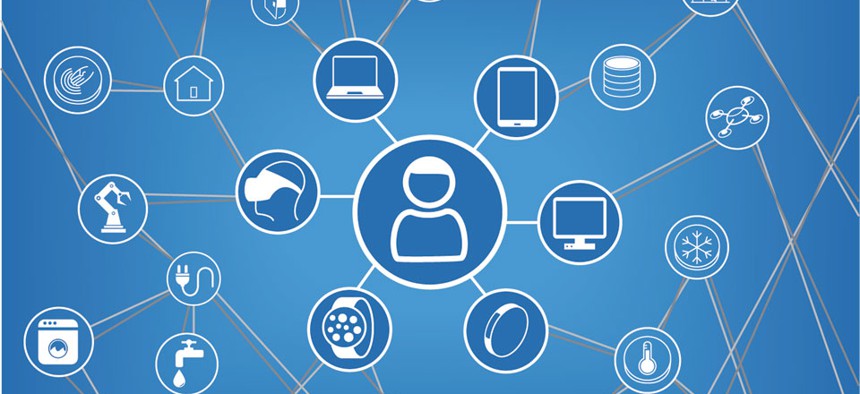Industry Sells Congress on Internet of Things

a-image/Shutterstock.com
During a House Subcommittee on Energy and Commerce meeting, lawmakers considered how the Internet of Things could move beyond consumer products.
Lawmakers are increasingly interested in applying the Internet of Things -- the same network that lets consumers control their toasters and thermostats by smartphone -- to public issues, such as unemployment and economic growth.
At an Energy and Commerce subcommittee hearing Tuesday, representatives asked witnesses from technology companies about applications beyond consumer electronics, as well as Congress' role in regulating that ecosystem of connected devices, objects and sensors.
This hearing happened weeks after the first-ever congressional hearing on the topic, held last month by the Senate Commerce, Science and Transportation Committee. Separately, the Senate passed a bipartisan resolution Tuesday to develop a national strategy on the Internet of Things, incentivizing its development and deployment.
Congressional discussion has touched on various applications for such a network -- monitoring the electrical smart grid and farm fields in remote rural areas and providing communication platforms for public defenders, among others.
At the Energy and Commerce hearing, Brian Van Harlingen, chief technology officer at consumer technology company Belkin, noted that the company had received a Defense Department grant to reduce energy costs at two test sites in the U.S., using sensor and machine-learning algorithms. (Belkin's home automation line, called WeMo, includes consumer products dedicated to monitoring energy and water use.)
As part of a question-and-answer session, Rep. Tony Cardenas, D-Calif., asked what the United States could learn from other nations’ approach to the Internet of Things -- especially against the backdrop of public crises like California's ongoing drought.
Rose Schooler, vice president of Intel Corp.’s Internet of Things business group, noted that the U.S. is behind other nations, including Germany, Brazil and China, which already have national plans on the topic. India has used smarter technology to rebuild its decaying water-pipe infrastructure, reducing waste, said Daniel Castro, director of the Center for Data Innovation, a Washington think tank.
“In the U.S., there’s still some hesitancy because that’s not how we are used to doing it," Schooler said. "We have to start embracing technology in a much more aggressive fashion than we have in the past."
Cardenas also asked how the Internet of Things could affect jobs and manufacturing in the United States. In her response, Schooler highlighted an Intel pilot program that distributed sensors throughout one of its factories; the data collected from that pilot, she said, saved the company $9 million in part through predictive and preventive maintenance.
“If you think about lowering the cost of goods sold, that’s a great way to attract jobs back to the U.S," she said.
Brad Morehead, chief executive of LiveWatch Security, which sells home security systems, testified that although most of LiveWatch's manufacturing happens off-shore, the predicted boom in the number of devices connected to the Internet of Things could create tech jobs in the U.S.
"You can't outsource the installation, activation, servicing and redeployment of those devices here in the U.S.," he said. It "could be another way to engage the workforce in the U.S., as opposed to just being dependent on the manufacturing."
But Rep. Markwayne Mullin, R-Okla., noted that the public may still be afraid of the idea of the Internet of Things.
"It shows itself very useful out there, but there's been some fear around tech," he said. "There's this group of people who says it's going to eliminate jobs. How do we combat that fear? People automatically fear things they don't understand."
(Image via a-image/ Shutterstock.com)





